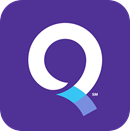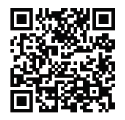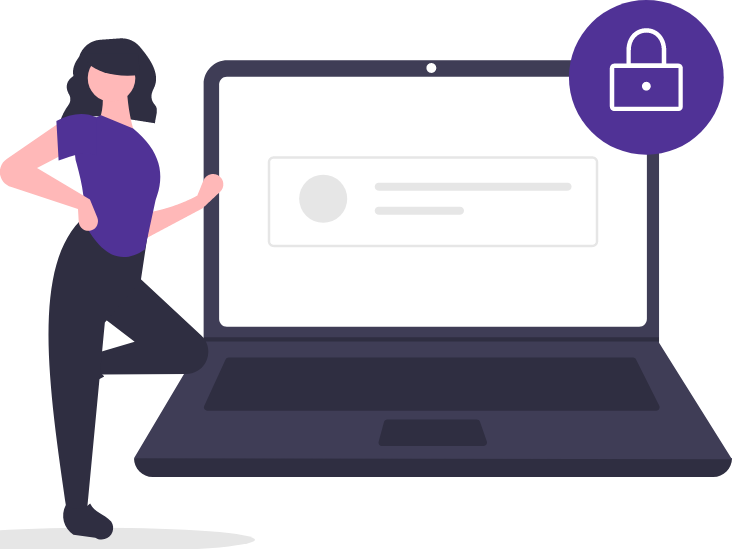Todo sobre Internet de banda ancha
Banda ancha es la forma abreviada de "ancho de banda amplia". Es un tipo de conexión a Internet de alta velocidad que apareció a finales de la década de 1990 y reemplazó a la tecnología de Internet por marcado telefónico de esa época. Gracias a que utiliza una frecuencia diferente a la de los teléfonos fijos, se puede estar "siempre conectado", es decir que ya no es necesario interrumpir tu servicio de telefonía cada vez que quieres conectarte.
La banda ancha, y sobre todo banda ancha por fibra óptica, proporciona las conexiones a Internet más rápidas hoy en día, lo que la convierte en el tipo de servicio de Internet más común. Además, existen varias tecnologías de banda ancha diferentes disponibles.
Observemos con más detalle cómo funciona la tecnología de banda ancha
¿Cómo funciona Internet de banda ancha?
A conexión de banda ancha utiliza una línea exclusivamente para la transmisión de datos. La banda ancha de fibra óptica utiliza cables de fibra óptica especializados, mientras que la banda ancha de una conexión DSL utiliza cables de cobre (que también se usan para las líneas telefónicas). La banda ancha por cable utiliza cables coaxiales (que también se usan para la TV por cable), y las conexiones de banda ancha satelitales y 4G/5G LTE son inalámbricas.
Cada tipo de conexión utiliza diferentes frecuencias que permiten un rango de velocidades. Un proveedor de servicios de Internet (ISP) utiliza una red de cables enterrados, computadoras potentes, enrutadores, conmutadores y más para establecer tu conexión a Internet.
Tipos de Internet de banda ancha
En la actualidad, existen cinco tipos de conexiones de banda ancha: cable, DSL, fibra óptica, por satélite e inalámbrica.
Internet DSL
DSL (Digital Suscriber Line) fue una de las primeras formas de banda ancha y sigue siendo un servicio muy común en la actualidad. La conexión DSL utiliza un solo par de cables de cobre en una línea telefónica para brindar una conexión de datos de alta velocidad. La señal DSL se transmite en diferentes frecuencias de la línea telefónica, por lo que deja en el pasado la competencia entre el acceso del teléfono e Internet. El uso de un módem para llevar conexión de tu línea telefónica a tu computadora permite que la DSL obtenga más ancho de banda, lo que aumenta las velocidades. Las velocidades de DSL hoy tienden a alcanzar una velocidad máxima de aproximadamente 140 Mbps.
Internet por cable
La internet por cable es casi tan común con el servicio de DSL. Utiliza los mismos cables coaxiales con los que transmite el servicio de TV para llevar una conexión a Internet de alta velocidad. Si utilizas un tipo especial de módem por cable, puedes conectarte a estas líneas y disfrutar de una conexión de datos de alta velocidad sin interrupciones. Las velocidades de Internet por cable pueden ser de hasta 940 Mbps para descargas y de hasta 50 Mbps para cargas.
Internet por fibra óptica
Internet por fibra óptica (al igual que Quantum Fiber) utiliza cables especiales de fibra óptica que envían datos como pulsos de luz por miles de diminutas fibras de cable transparentes. Debido a que la luz es la manera más rápida de transmitir datos, Internet por fibra óptica ofrece una conexión increíblemente rápida y super confiable con alucinantes velocidades multigigabit de hasta 8 Gbps.
Internet por satélite
Internet por satélite transmite datos de ida y vuelta desde satélites que orbitan la Tierra. No es tan rápido ni constante como otros tipos de Internet de banda ancha, pero puede utilizarse en cualquier parte del mundo. Las velocidades del servicio satelital para descargas en general se encuentran entre 25 Mbps y 100 Mbps, y tienen una velocidad promedio para cargas de 25 Mbps.
Internet inalámbrica
Internet inalámbrica, como 4G y 5G, también está disponible por satélite. Es más común en las zonas rurales que no tienen infraestructura para redes de Internet por cable (DLS, cable o fibra óptica). Por lo general, este tipo de servicio lo ofrecen las compañías de telefonía móvil, aunque las compañías de telecomunicaciones también suelen brindar opciones de servicio inalámbrico.
Banda ancha y Wi-Fi: ¿qué diferencia hay?
Banda ancha es la conexión a Internet en tu casa o pequeño negocio. Wi-Fi es la conexión inalámbrica que utilizas en tu casa o pequeño negocio para conectar el servicio de banda ancha. El servicio de banda ancha que llega hasta el módem se convierte a una señal inalámbrica mediante un enrutador u otra solución de Wi-Fi, lo que te permite conectar varios dispositivos en forma inalámbrica a Internet.
Los días de conexiones por marcado han desaparecido para siempre. A medida que el Internet por fibra óptica y otros tipos de tecnologías de banda ancha vayan avanzando en el futuro, las velocidades a las que podemos acceder y lo que podemos hacer en línea parecen prácticamente ilimitadas. No importa el tipo de servicio de banda ancha, todo es parte de la increíble época de Internet que nos toca vivir. Bienvenidos al futuro.
Este contenido se proporciona únicamente con fines informativos y es posible que el usuario final deba realizar una investigación y verificación adicional. Asimismo, la información es suministrada en el estado en el que se encuentra, sin garantía ni condición de ningún tipo, ya sea expresa ni implícita. El riesgo que implica el uso de esta información corre por cuenta del usuario final. Todos los nombres de empresas y productos o servicios de terceros mencionados en este artículo son solo para fines de identificación y no implican respaldo ni afiliación alguna con Quantum Fiber. Este documento representa los productos y las ofertas de Quantum Fiber a la fecha de su publicación. Los servicios no están disponibles en todos lados. Quantum Fiber podrá cambiar o cancelar productos o servicios, o reemplazarlos por productos o servicios similares, a su exclusivo criterio y sin previo aviso. ©2024 Q Fiber, LLC. Todos los Derechos Reservados. Quantum, Quantum Fiber y Quantum Fiber Internet son marcas comerciales de Quantum Wireless LLC y se utilizan bajo licencia de Q Fiber, LLC.
Temas relacionados
-
¿Qué es la fibra óptica? -
Etiqueta de banda ancha -
Solución a problemas y velocidad -
Aspectos básicos del Wi-Fi -
Vida en línea
¿Fue útil esta información?








